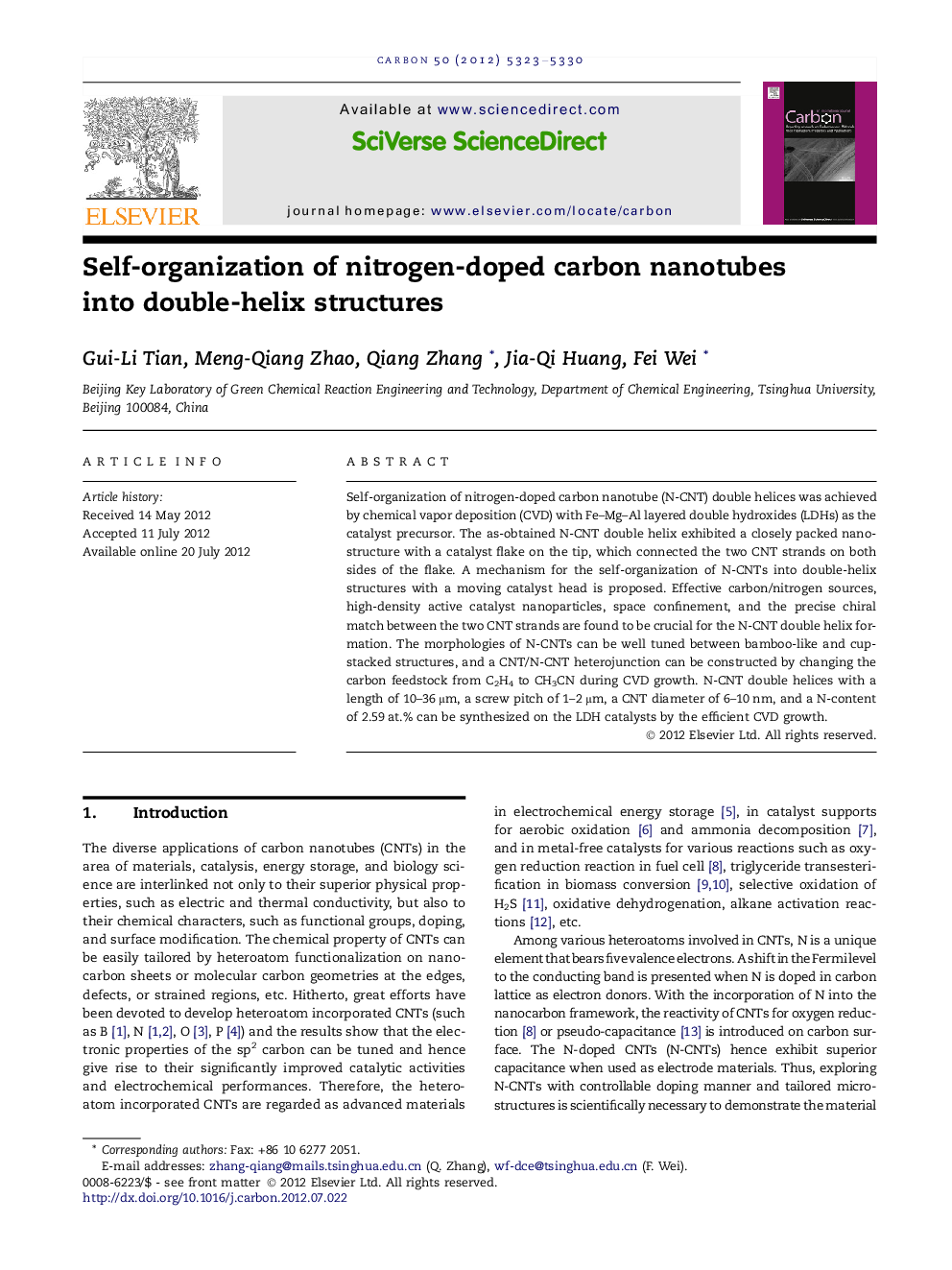| Article ID | Journal | Published Year | Pages | File Type |
|---|---|---|---|---|
| 10610478 | Carbon | 2012 | 8 Pages |
Abstract
Self-organization of nitrogen-doped carbon nanotube (N-CNT) double helices was achieved by chemical vapor deposition (CVD) with Fe-Mg-Al layered double hydroxides (LDHs) as the catalyst precursor. The as-obtained N-CNT double helix exhibited a closely packed nanostructure with a catalyst flake on the tip, which connected the two CNT strands on both sides of the flake. A mechanism for the self-organization of N-CNTs into double-helix structures with a moving catalyst head is proposed. Effective carbon/nitrogen sources, high-density active catalyst nanoparticles, space confinement, and the precise chiral match between the two CNT strands are found to be crucial for the N-CNT double helix formation. The morphologies of N-CNTs can be well tuned between bamboo-like and cup-stacked structures, and a CNT/N-CNT heterojunction can be constructed by changing the carbon feedstock from C2H4 to CH3CN during CVD growth. N-CNT double helices with a length of 10-36 μm, a screw pitch of 1-2 μm, a CNT diameter of 6-10 nm, and a N-content of 2.59 at.% can be synthesized on the LDH catalysts by the efficient CVD growth.
Related Topics
Physical Sciences and Engineering
Energy
Energy (General)
Authors
Gui-Li Tian, Meng-Qiang Zhao, Qiang Zhang, Jia-Qi Huang, Fei Wei,
